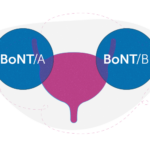Drawing on data to revolutionize pediatric urology

At first blush, data analytics — sifting through raw data to discover patterns and draw conclusions from them — seems far afield from the practice of pediatric urology. One discipline involves crunching numbers at a computer, while the other involves caring for patients in the clinic or operating room (OR). But for members of Boston Children’s Department of Urology, the two are a perfect match. In fact, says urologist-in-chief Carlos R. Estrada Jr, MD, MBA, data science has the potential to revolutionize patient care.
That’s the bold mission of the department’s new Computational Healthcare Analytics Program (CHAP). This interdisciplinary program provides the infrastructure and resources to enable the development of next-generation innovations aimed at improving children’s urologic health. The CHAP team includes pediatric urologist Hsin-Hsiao Scott Wang, MD, MPH, MBAn, and data scientist Michael Li, PhD, MBAn, as well as faculty from Harvard Medical School and MIT, who have deep expertise in machine learning algorithms and artificial intelligence (AI). Using these advanced analytics, the team aims to identify highly complex patterns from vast amounts of patient-derived data, allowing clinicians to make personalized, safe, and cost-effective decisions for their patients.
“’AI’ has become a marketing buzzword in medicine. This is different,” explains Estrada. “We’re using custom-made algorithms developed by our team in collaboration with leaders in the field of data analytics.”
Personalizing pediatric urology care
The program’s first three initiatives promise to advance the practice of urology by addressing common clinical and operational challenges. For the first, Wang and his colleagues used data from the Randomized Intervention for Children with Vesico-Ureteral Reflux (RIVUR) and Careful Urinary Tract Infection Evaluation (CUTIE) trials to develop high-performance models predicting significant clinical outcomes that necessitate invasive diagnostics and treatments in children with initial urinary tract infection (UTI) and vesicoureteral reflux (VUR).
Based on these predictions, children at high risk of both VUR and recurrent UTI would be approached more aggressively with voiding cystourethrography, while low-risk patients would be observed. This could allow urologists to provide personalized care to patients with VUR by assigning diagnostic imaging and treatments to only those who need them — sparing adverse effects for those who don’t.
Advanced algorithms to standardize urodynamics
Another focus for CHAP is the use of new analytical approaches for urodynamics, the gold-standard modality for evaluating bladder and urinary sphincter function prior to urologic and neurosurgical interventions in patients with complex conditions such as spina bifida. While urodynamics can provide clinicians with a rich set of data, the interpretation of these tests remains unstandardized. That can make it challenging for urologists to reliably read, analyze, and compare the results. To address this issue, the CHAP team has developed a predictive model based on machine learning algorithms. This approach aims to improve physicians’ ability to accurately identify detrusor overactivity, a urodynamics finding in which the bladder’s detrusor muscle contracts uncontrollably. Preliminary analysis shows great promise in using advanced algorithms to provide consistent and objective pattern recognitions for future interpretation of urodynamics studies.
Maximizing efficiency for patients and staff
Finally, the CHAP team hopes to transform health care operations for urologists. By using data drawn from clinic visits and OR procedures, they are developing predictive models meant to optimize OR scheduling and maximize clinic efficiency, with significant preliminary results, says Estrada. Such improvements are strongly tied to both patient and staff satisfaction.
“This program holds great potential to improve the care we provide to our patients and families,” says Estrada. “We are fortunate to have Dr. Wang leading this initiative and to have such world-class collaborators with whom we will drive this work forward.”
Have questions or want to refer a patient? Contact the Department of Urology.
Related Posts :
-

Building a bladder-specific Botox
Botulinum toxins are bacterial neurotoxins that also have a range of therapeutic uses. In urology, injections of these potent substances ...
-

Harnessing the power of machine learning to improve urology care
Urodynamics — a group of tests that evaluate how well the body collects, and then releases, urine — can be crucial for ...
-

Predicting the best treatment for vesicoureteral reflux in kids: The power of machine learning
The result of abnormal formation of the normal valve between the kidney and bladder, vesicoureteral reflux (VUR) can lead to ...
-

Innovative new shunt delivery system holds promise for treatment of fetal urinary tract obstruction
Urinary tract obstruction that occurs in utero can have serious consequences for the fetus. Such obstructions can block the flow ...





